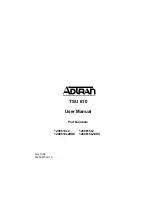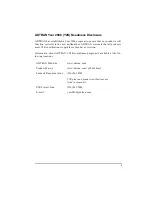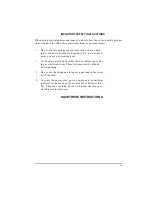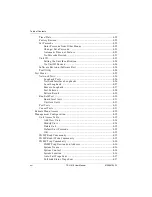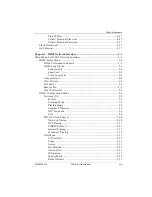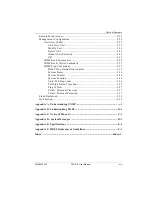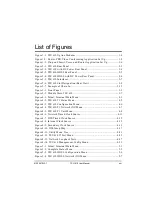
vii
CANADIAN EQUIPMENT LIMITATIONS
Before installing this equipment, users should ensure that it is permissible to be
connected to the facilities of the local telecommunications company. The equip-
ment must also be installed using an acceptable method of connection. In some
cases, the company's inside wiring associated with a single line individual ser-
vice may be extended by means of a certified connector assembly (telephone
extension cord). The customer should be aware that compliance with the above
conditions may not prevent degradation of service in some situations.
Repairs to certified equipment should be made by an authorized Canadian
maintenance facility designated by the supplier. Any repairs or alterations
made by the user to this equipment, or equipment malfunctions, may give the
telecommunications company cause to request the user to disconnect the equip-
ment.
Users should ensure for their own protection that the electrical ground connec-
tions of the power utility, telephone lines and internal metallic waterpipe sys-
tem, if present, are connected together. This precaution may be particularly
important in rural areas.
The Load Number (LN) assigned to each terminal device denotes the percent-
age of the total load to be connected to a telephone loop which is used by the
device, to prevent overloading. The termination on a loop may consist of any
combination of devices subject only to the equipment that the total of the LNs of
all devices does not exceed 100.
The ringer equivalence number (REN) assigned to each terminal adapter is
used to determine the total number of devices that may be connected to each
circuit. The sum of the RENs from all devices in the circuit should not exceed a
total of 5.0.
The Industry Canada Certification label identifies certified equip-
ment. This certification means that the equipment meets certain
telecommunications network protective, operational, and safety
requirements. The Department does not guarantee the equipment
will operate to the user's satisfaction.
Users should not attempt to make such connections themselves,
but should contact the appropriate electric inspection authority,
or an electrician, as appropriate.
Summary of Contents for 1200610L2
Page 20: ...Table of Contents xx TSU 610 User Manual 61200610L2 1...
Page 24: ...List of Tables xxiv TSU 610 User Manual 61200610L2 1...
Page 56: ...Chapter 3 Operation 3 12 TSU 610 User Manual 61200610L2 1...
Page 94: ...Chapter 4 T1 Network Interface 4 38 TSU 610 User Manual 61200610L2 1...
Page 142: ...Appendix B Understanding TR 08 B 4 TSU 610 User Manual 61200610L2 1...
Page 156: ...Appendix E Specifications E 4 TSU 610 User Manual 61200610L2 1...
Page 168: ......

